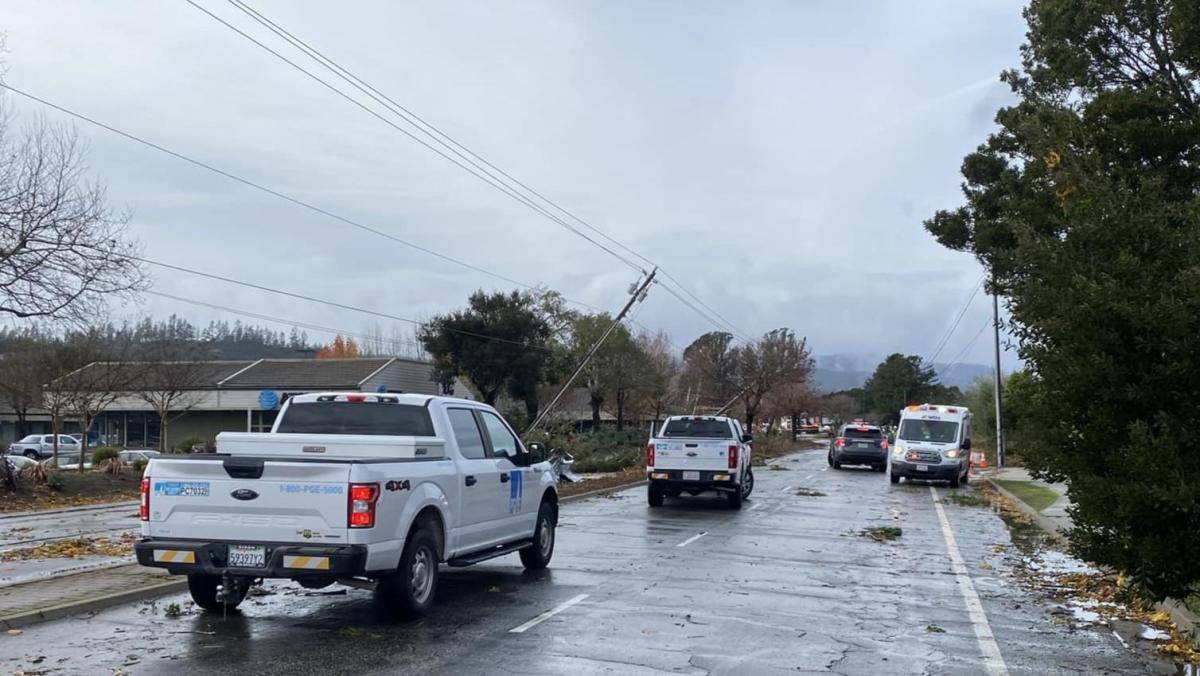Unleashing Nature’s Fury: The Tornado that Struck Scotts Valley
In a shocking turn of events, Scotts Valley, a serene community nestled near Santa Cruz, California, was recently struck by a powerful tornado. This natural disaster, rare for the region, has left an indelible mark on the landscape and the lives of its residents. Eyewitness accounts detail the chaos as the tornado tore through homes, flipped vehicles, and prompted immediate calls for assistance. As the community rallies together for recovery, the implications of this event ripple through discussions on climate change, emergency preparedness, and the resilience of small towns.
The Tornado’s Impact
On the afternoon of [insert date], residents of Scotts Valley experienced what many described as a surreal and terrifying event. The tornado, classified as an EF-2 on the Enhanced Fujita Scale, packed winds of up to 130 miles per hour, causing significant damage to both residential and commercial properties. Eyewitnesses recounted scenes of destruction, with trees uprooted and power lines downed, leaving many without electricity.
Eyewitness Accounts
Local resident Jane Doe shared her experience: “It was like a freight train passing through. I saw my neighbor’s car get lifted and tossed into the air like it was nothing.” Another resident, John Smith, described the sound: “It was deafening. You could feel the pressure drop, and then all hell broke loose.”
Extent of Damage
The tornado caused extensive damage across Scotts Valley:
- Residential Areas: Over 100 homes reported damage, with some completely destroyed.
- Commercial Properties: Local businesses faced significant structural damage, affecting the livelihoods of many entrepreneurs.
- Infrastructure: Key roads were blocked by debris, complicating emergency response efforts.
- Environmental Impact: The tornado uprooted numerous trees, altering the local ecosystem.
Emergency Response and Community Support
In the aftermath of the tornado, local authorities quickly mobilized emergency response teams. The Scotts Valley Fire Department and neighboring agencies worked tirelessly to assess the damage and provide assistance to those affected.
Community Initiatives
The community has also shown remarkable resilience and solidarity. Local organizations have set up donation drives and relief funds to support families in need. Efforts include:
- Food and Shelter: Temporary shelters have been established, and food banks are providing meals to displaced individuals.
- Fundraising Events: Community events are being organized to raise funds for recovery efforts.
- Volunteer Programs: Residents are coming together to help clean up debris and rebuild homes.
Broader Implications: Climate Change and Natural Disasters
The tornado in Scotts Valley raises important questions about the increasing frequency and intensity of natural disasters attributed to climate change. While California is not known for tornadoes, changing weather patterns and rising temperatures may contribute to unusual weather phenomena.
Understanding Tornadoes
Tornadoes form under specific atmospheric conditions, typically involving severe thunderstorms. The occurrence of tornadoes in areas not traditionally prone to them is becoming more common as climate change alters weather patterns. Scientists are studying how these changes could lead to more extreme weather events in the future.
Preparedness and Education
This disaster underscores the importance of preparedness and education in communities vulnerable to extreme weather. Key strategies include:
- Emergency Plans: Communities should develop and regularly update emergency response plans to address potential disasters.
- Public Awareness Campaigns: Educational programs can inform residents about tornado safety measures and how to respond during severe weather.
- Infrastructure Resilience: Investing in resilient infrastructure can help mitigate damage during such events.
Conclusion
The tornado that struck Scotts Valley serves as a stark reminder of nature’s unpredictability and power. As the community begins to recover from this traumatic event, it is imperative to reflect on the lessons learned regarding emergency preparedness, community resilience, and the broader implications of climate change on weather patterns. The road to recovery will be long, but the spirit of Scotts Valley remains unbroken as residents come together to support one another in the face of adversity.
As we look to the future, it is crucial for communities across the nation to consider how they can better prepare for the unexpected, fostering a culture of resilience and adaptability in the face of nature’s fury.
See more Your Daily Weather



